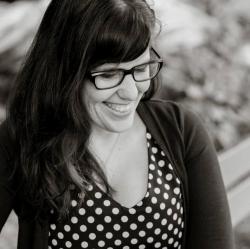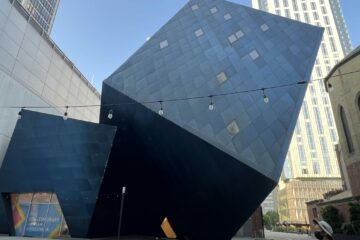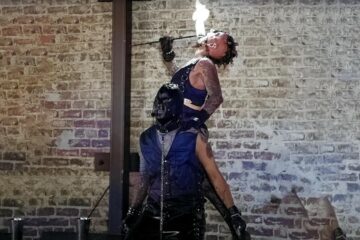The Bohemian Streetcar Neighborhood On Ocean Beach, ‘Carville’ by the Sea

Ocean Beach, SF at the turn of the century. Photo SF Public Library
Carville, San Francisco. The bohemian beach neighborhood created by San Francisco artists, and made out of discarded railcars that stood from 1895-1930’s. Yes, this is a magical piece of SF History.
In 1895 the Market Street Railway Company began selling old abandoned horse-drawn railcars, “$20 with seats, $10 without. ” By 1900 more than 100 of these cars were perched in the sand dunes just south of the ocean end of Golden Gate Park. In the beginning, these cars were mostly used as clubhouses, restaurants and beach cottages. Mayor Adolph Sutro owned the land and encouraged people to develop Carville, and it became a wonderfully unique and bohemian scene.

As the years went on, Carville Residents became more and more creative with the street car additions.

In the 1910s and on the street cars began turning into three story buildings! Image FoundSF

Inside a carville ‘home’. Image SF Public Library
Bicycle culture in America was booming at the turn of the century, and San Francisco was developing a it’s own bike scene, bike paths and bike clubs. A strong bicycle culture that still exists today in SF, and if you have ever taken the wiggle bike path down the panhandle, through Golden Gate park, and into Ocean Beach then you understand, it’s a fantastic ride through the western half of the city. Early bike club bunkhouses and businesses began popping up on the dunes to service bike riders at the beach.
Just check out these amazing early bicycle clubs and Carville buildings:

Falcons Women’s Bicycling Club at Carville by the Sea. Image Wikipedia

The women of the Liberty Cycling Club astride their Liberty cycles, c. 1895.
Photo: California Historical Society

Bloomers were the rage in the mid-1890s, making the cover of The Wasp. Image: California Historical Society

Villa Miramar “Wheelmen’s Rest” c. 1890s Ocean Beach SF.

Bay City Wheelmen at the outset of a Century (100-mile) Ride in 1890 on 21st Street, probably at Folsom.
By the way, Adolph Sutro was a pretty incredible guy, a real hero to workers and a near genius entrepreneur with wonderfully crazy ideas. Read about how he fought big business here, to preserve worker safety (and make a fortune). Carville, was only possible because Sutro owned the land and was always looking for a way to popularize ocean beach (and make a buck). Checkout the history of Sutro Baths, built in the same period as Carville, Ocean Beach was so incredibly different back then.

Sutro Baths 1896, Ocean Beach San Francisco. Wikipedia
Author Natalie Jahraus Cowan, wrote an entire book on Carville in 1978, and this is what she described it as in a foundsf photo essay:
“One could stroll across the dunes to the picnic car of the “Fuzzy Bunch,” long-haired Bohemians of the gay ’90s, which included Maynard Dixon, Jack London, George Sterling, Ina Coolbrith and many others. In the early 1900s a group of musicians christened their lair “La Boheme” after the popular new opera, their car being the original “Annex” run at the outset of Carville as a refreshment stand by Sutro’s friend Col. Dailey.

Carville houses early 1900’s. Image California Historical Society

Carville-by-the-Sea: San Francisco’s Streetcar Suburb. A book by Woody LaBounty
Members of the Metropolitan Opera were entertained at La Boheme in 1908 which they later declared their best stop on the trip. In the early years of the 20th century people began to make Carville home. After the 1906 earthquake and fire a number of refugees settled in Carville, including for a while Fremont Older, editor of the San Francisco Bulletin and major instigator of the graft prosecutions against Ruef and Mayor Schmitz. Many people stayed and the neighborhood became more formalized.

Carville in the early 1900’s. Image: GG Park Archives

The first Golden Gate Park Windmill was built in 1903.

After the 1906 earhquake, many families moved into Carville to seek refuge from the destruction.

Photo: outsidelands.org

St. Andrew’s Episcopal Church, originally rented out as the Vista del Mar, stood at 1338 47th Avenue in the 1910s. The upper floor was made of old horsecars. – Photo: outsidelands.org
The Oceanside Improvement Club, founded in 1903, had by 1910 managed to establish electric, gas and water service for residents, as well as grading and paving streets, and had also laid plans for a sewer line. The neighborhood didn’t really develop extensively, however, until the 1928 extension of the Judah streetcar line to the beach. Stucco houses, apartments and motels soon replaced the 30 or so cars still standing into the 1930s. Glimpses of houses built on the remains of old streetcars can still be caught in the blocks around 48th and Irving.”

A house built of streetcars, Photo taken in 1999. Photo: Bob Swanson, Preservation Magazine

Only one carville house remains at 1632 Great Highway between Lawton and Moraga








